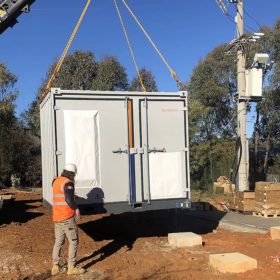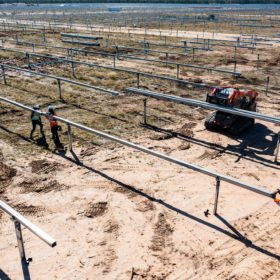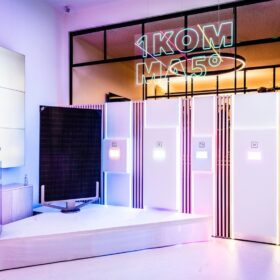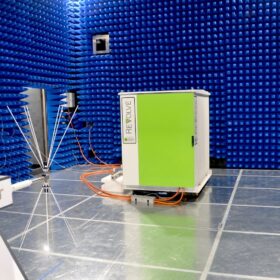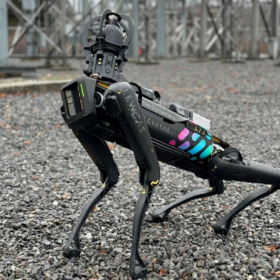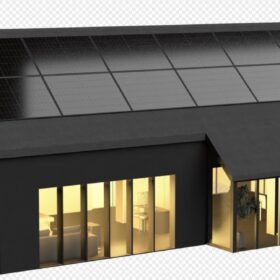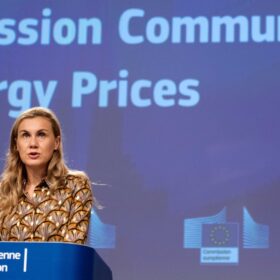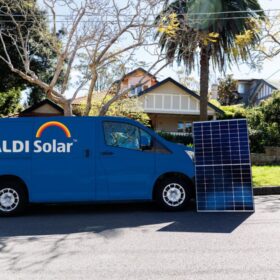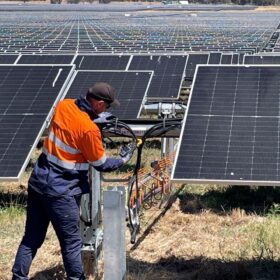Queensland’s publicly-owned battery rollout sees next town selected for 8 MWh install
Queensland is continuing its rollout of publicly-owned batteries, announcing the town of Emerald in its Central Highlands Region will soon host a 4 MW / 8 MWh battery. While the announcement doesn’t make reference to buzz term ‘community batteries,’ it seems the state is effectively rolling out a storage fleet to deliver on the promises of the concept.
Investment ‘boom’ in Australia sees utility-scale jump 50%, puts targets within reach
New investment in solar and wind hit a record 7.1 GW in Australia in 2022, with the Clean Energy Regulator reporting a 50% increase in large-scale projects reaching final investment decision compared to 2021. In total, 5.3 GW of new renewable energy capacity was added to the grid in 2022, according to the Regulator’s State of Renewables report.
German outfit brings own solar panel brand to Australia
German startup 1Komma5 has started production on its own solar modules, which are expected to hit Australian shores “imminently,” Chris Williams, CEO of its APAC arm, told pv magazine Australia. The company has just signed a polysilicon contract with fellow German company Wacker, a step towards addressing issues around unethical labour and embedded emissions in solar’s supply chain.
Relectrify gets global green light for battery tech
Australian battery technology startup Relectrify has been given the tick of approval by the International Electrotechnical Commission for its ReVolve energy storage product, opening the way for the company to scale up the global rollout of its cell-level control technology.
Iberdrola using dogs, robots to monitor solar plants
Iberdrola is using a springer spaniel in a solar park to smell electrical problems that could lead to power cuts. It is also using a robotic dog to detect and analyse faults in substations.
Solar grazing methods a centrepiece of inaugural agrivoltaics conference
Dan French, executive producer of the Solar Farm Summit, told pv magazine USA that more than 500 farmers, manufacturers, and community solar developers likely attended the first US agrivoltaics conference in Chicago last week.
Skylab plans giga-scale solar and battery project for Queensland
Australian solar tracking distributor and renewable energy project developer Skylab has unveiled ambitious plans to build an almost 1 GW solar farm and battery energy storage facility in regional Queensland.
DAS Solar unveils n-type bifacial module for Australian market
Chinese module manufacturer DAS Solar has marked its entry into the Australian market with the release of an all-black n-type bifacial solar panel featuring an output of 410 W to 430 W and efficiencies of up to 22%.
Kinaltek announces nanosilicon tech will help build better batteries
Australian materials technology developer Kinaltek has unveiled a one-step production process that it says can convert common silica powders into battery-grade nanosilicon for less than 5% of the cost of existing technologies, paving the way for the use of silicon nanoparticles in high-performance lithium-ion batteries.
Europe to launch hydrogen auctions
The European Commission says it will set up the new European Hydrogen Bank by the end of this year, with additional plans to hand out 10-year contracts in a new hydrogen auction. Meanwhile, Fortescue Future Industries is setting up a project in Kenya.
